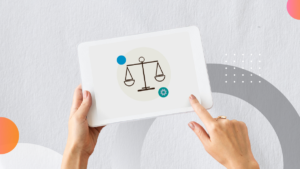Essential Insights into AI-Powered Translation

AI-Powered Translation Services: Uncover the Essentials
As we embrace a more interconnected global landscape, businesses and individuals find themselves communicating across various cultures more frequently. Consequently, the significance of AI translation services has never been greater. This technology marks a substantial change in how we approach cross-cultural communication and international business, extending far beyond mere language translation.
The integration of AI into translation services mirrors the current era, where technology collaborates with human expertise to produce efficient, precise, and culturally-sensitive solutions. AI-powered translation not only converts languages but also fosters a deeper understanding and connection among diverse cultures and markets.
In this article, we will explore the world of AI translation, examining its impact, cost, applications, and how it differs from traditional machine translation. We will also look at how businesses can harness this technology to break down language barriers and reach a diverse global audience.
What Are AI Translation Services?
AI translation services employ advanced algorithms and machine learning techniques to interpret and translate languages. What’s new? Well, unlike traditional methods, AI translation continuously learns from data inputs, improving its accuracy and fluency over time. This technology is reshaping the translation landscape, offering solutions that are both scalable and adaptable. Amazing, huh?
Benefits of AI Translation
- Speed: AI translations are significantly faster than manual translations.
- Cost-Effective: The costs are lower compared to traditional translation methods.
- Scalability: This method is ideal for handling large volumes of content.
- Accessibility: Like multilingual SEO, AI translations make translation services more accessible to a wider audience.
#OptimationalTip—Regular Feedback Loops: Implement regular feedback loops with your local market teams or customers to refine AI translations. Continuous feedback helps in fine-tuning AI algorithms, ensuring they align better with local dialects and cultural contexts.
How Much Do AI Translation Services Cost?
Pricing for AI translation services generally ranges from EUR 0.04 to 0.18 per word. The cost is calculated per word and varies based on the language’s complexity and context.
What Kind of Documents Can be Translated With AI?
While AI is versatile, it’s crucial to consider the nature of the document. And why is that? Technical or legal documents may require human expertise for nuances and specific jargon. However, AI is highly effective for general content, marketing materials, and straightforward informational texts.
Difference Between AI and Machine Translation
You probably find yourself wondering about these two, don’t you? Understanding the distinction between AI-driven translation and conventional machine translation is crucial for businesses looking to leverage these technologies effectively. Here’s an in-depth look at the differences:
- Learning and Adaptation: AI translation services, as opposed to basic machine translation tools like Google Translate, DeepL, or Yandex, are built on sophisticated machine learning algorithms. These algorithms allow AI translators to learn and adapt over time, improving their accuracy and fluency with each translation. This progressive learning feature is especially beneficial for businesses requiring translations in specialised sectors or for documents filled with industry-specific jargon.
- Contextual Understanding: One of the major advancements in AI translation is its ability to grasp context. On the one hand, traditional machine translation often struggles with nuances, idioms, and cultural references. AI translation, on the other hand, is designed to understand the broader context of the text, leading to translations that are accurate and relevant for the target audience.
- Customisation and Integration: AI translation tools typically offer greater customisation and integration capabilities. They can be trained with specific datasets relevant to a particular business or industry, thereby providing more accurate translations for specialised content. Additionally, these tools can be integrated into existing business workflows and systems, enhancing efficiency and productivity.
- Human Involvement: While AI translation is powerful, it’s important to note that it doesn’t eliminate the need for human expertise. In many cases, the best results are achieved through a combination of AI translation and human post-editing. This approach ensures that the final translation is not only accurate, but also retains the nuances and subtleties of the original text.
Tools Used for AI Translation
The world of AI translation tools is a true linguistic revolution that’s changing the way we handle languages. This field isn’t just about one or two key players; it’s a diverse and dynamic arena with a multitude of companies and technologies, each bringing something special to the table. From advanced algorithms that can handle complex language nuances to user-friendly interfaces that make translation accessible to everyone, these tools are reshaping our approach to cross-cultural communication.
- Smartcat: A bit of a star in AI translation, Smartcat marries advanced AI tech with user-friendly features. It’s not just about translating text; Smartcat steps it up with multimedia translation capabilities, like video/audio transcription and AI voiceovers.
- Google Translate API: A household name, Google Translate offers an API that’s widely used for quick translations. It’s handy for translating websites or apps, though it might not always catch the finer nuances of language.
- DeepL: Now, this is a tool that’s been turning heads. DeepL is known for its impressive language models that often provide translations with a more natural feel compared to others. It’s particularly good with European languages.
- Microsoft Translator: Part of the Microsoft Azure suite, this tool is great for businesses already in the Microsoft ecosystem. It offers real-time translation and supports a variety of languages.
- Amazon Translate: A part of AWS, Amazon Translate is ideal for those needing translation integrated into larger cloud-based systems. It’s efficient and great for large-scale translation tasks.
How Long Does the AI Translation Process Take?
When it comes to AI translation turnarounds, it really depends on the task at hand. The brilliant thing is, it’s generally much faster than traditional manual translation. Imagine this: a skilled linguist can manage about 3,000 words per day with a bit of help from AI—that’s pretty nifty, isn’t it?
But, as with anything, the specifics of your project are key. If your document is full of technical jargon or industry-specific language, the AI might need a tad more time to get to grips with it. And let’s not overlook the human element – it’s absolutely crucial. Once the AI has done its bit, having a human cast their eye over it ensures all those subtle nuances and the overall tone are spot on.
So, in short, while AI translation is rather speedy, the actual time it takes can vary. It’s all about striking the perfect balance between the fantastic efficiency of AI and the invaluable insights of human expertise, ensuring your translation is both swift and of the highest quality.
AI Translation Workflow
Every time you start looking for a new linguistic vendor, DO check that the workflow they offer is comprehensive and personalised. At Optimational, the AI translation process involves a sophisticated interplay of technology and human expertise, designed to maximise efficiency and accuracy. Let’s delve into how this process unfolds:
- 1. Initial Analysis and Preparation:
- The process begins with a thorough analysis of the source material. AI algorithms are adept at parsing various document formats (like MS Word, PDF, and PowerPoint), extracting translatable content while maintaining the document’s structure and layout.
- A crucial aspect of this stage includes setting up the translation memory and terminology management systems. AI helps in building multilingual glossaries and translation memories, ensuring linguistic accuracy and consistency across translations.
- 2. AI-Driven Translation:
- At the core of the workflow is the AI translation phase, where sophisticated neural machine translation (NMT) systems translate the text. These systems leverage deep learning to understand context, idioms, and even unique writing styles, thus enhancing the quality of the translated output.
- For specific industries or projects, AI translation systems can be customised to align with particular jargon or lexicon.
- 3. Human Intervention and Enhancement:
- While AI significantly boosts the translation process, human expertise remains vital. Professional translators and linguists review AI-generated translations, making necessary adjustments to capture nuances and subtleties that AI might miss. The final result? Well, this collaborative approach ensures that the end product is culturally successful.
- 4. Quality Assurance and Final Review:
- The AI system continuously conducts quality checks, including grammar and syntax reviews, to ensure high-quality output.
- The final stage often involves a linguistic validation and review process, where translations are meticulously checked against quality standards.
- 5. Delivery and Feedback Integration:
- Once the translation is deemed complete, it’s delivered to the client. The AI system then integrates feedback from this and previous projects to improve future performance; continuous learning is a key feature of AI translation systems, where they adapt and evolve based on the data they process.
- 6. Post-Project Analysis:
- After project completion, AI tools provide valuable insights and metrics, allowing teams to assess the performance and efficiency of the translation process. This data is crucial for improving future translations.
The workflow can differ depending on the specific needs of each company. If you require a personalised approach, please do not hesitate to contact us.
#OptimationalTip—Embrace Cultural Nuances: When expanding into new markets, it’s crucial to understand and respect cultural nuances. AI translation can handle language, but understanding local customs, humour, and social norms is key.
Wrapping Up: For Innovative Methods, An AI Approach
Having provided all this information, it is safe to say that AI-powered translation services offer a revolution in speed and efficiency, accuracy, contextual relevance, cost-effectiveness, human-AI synergy, and continuous improvement. Moreover, AI contributes to breaking down language barriers, facilitating international collaboration, and enhancing cross-cultural understanding, thereby reflecting broader implications of global connectivity.
They represent a shift in how we approach global communication, enabling businesses to transcend language barriers and ensuring that their message resonates with a diverse global audience. The role of AI in translation will only become more integral, continually shaping the landscape of global communication and collaboration.How is your business harnessing the power of AI in translation? Are you ready to explore the vast possibilities AI translation services can offer for your global expansion and communication needs? Let’s talk!


